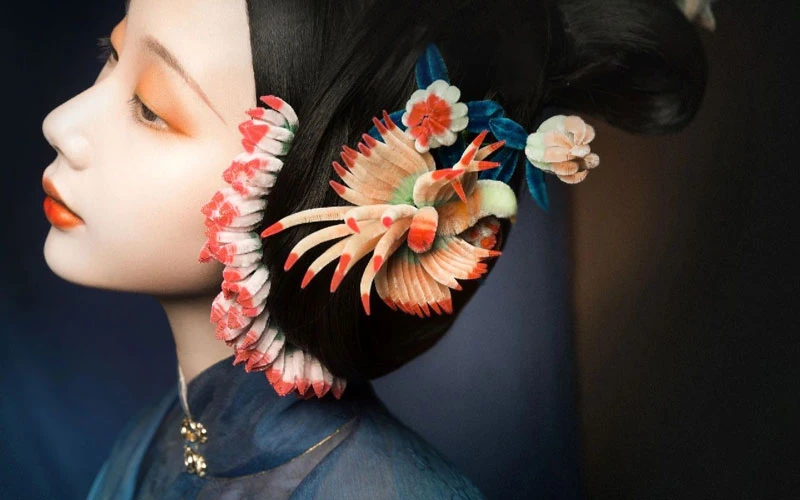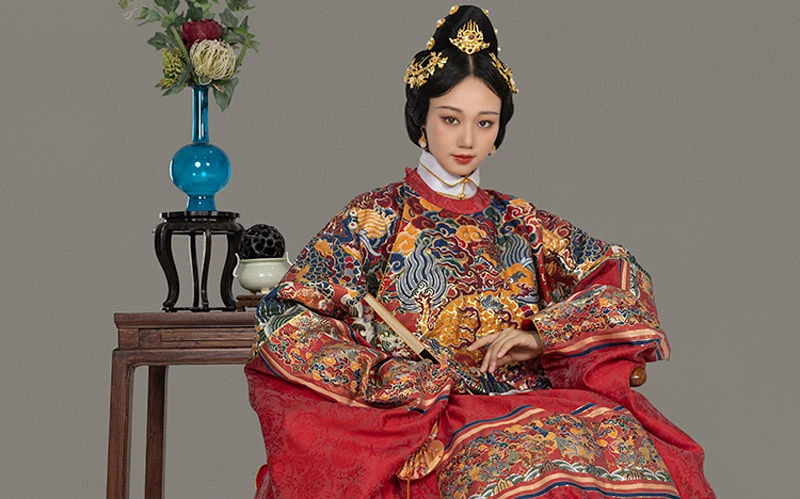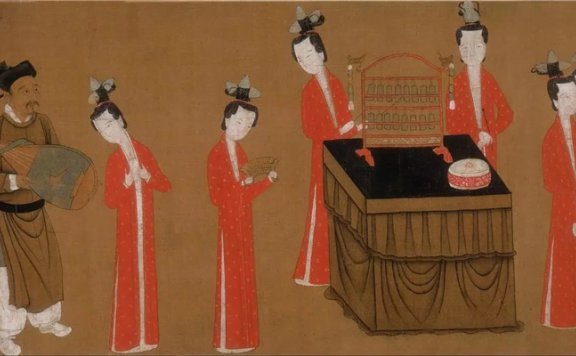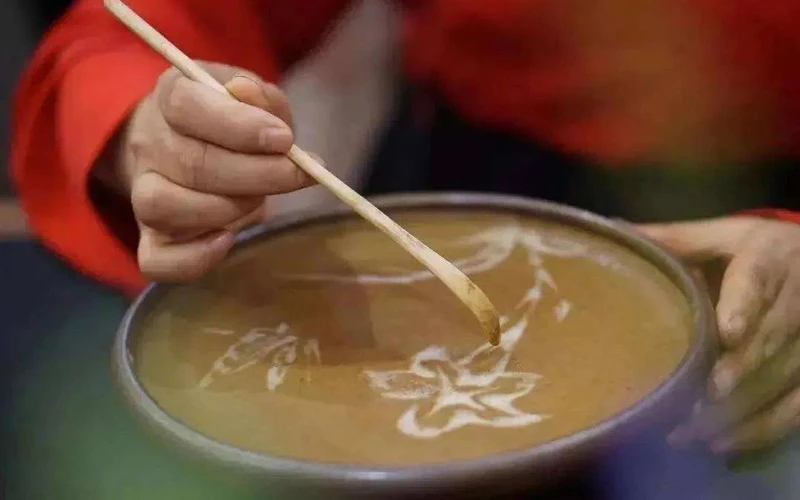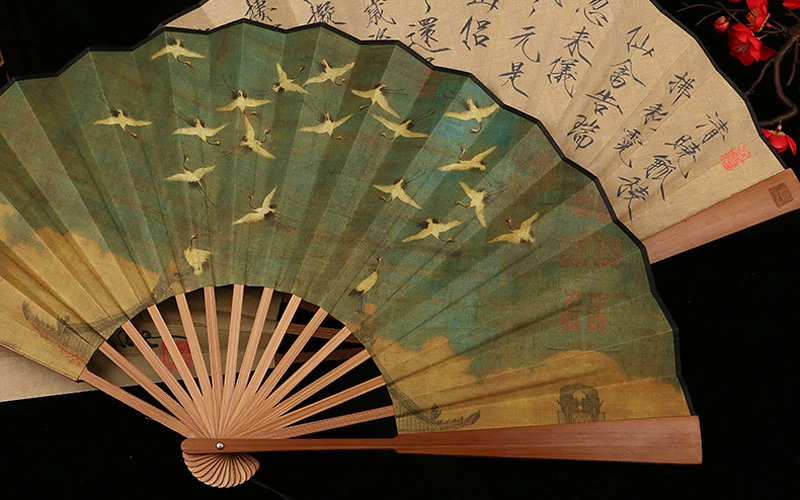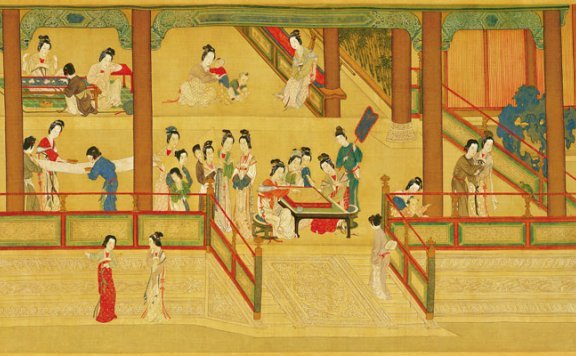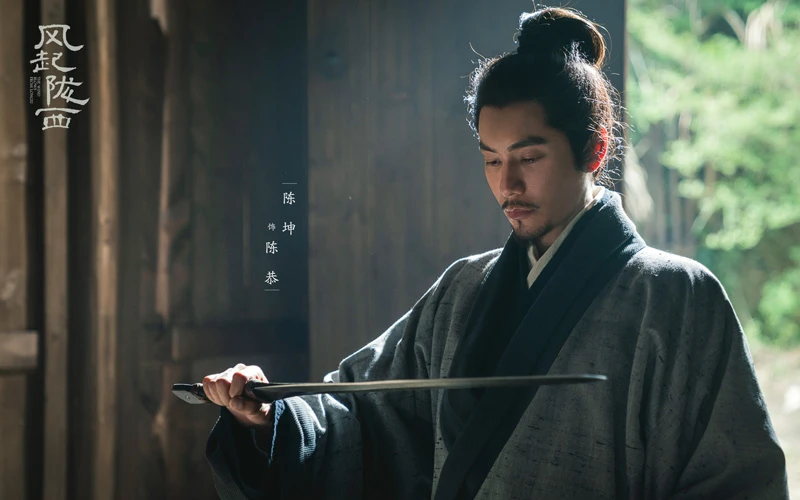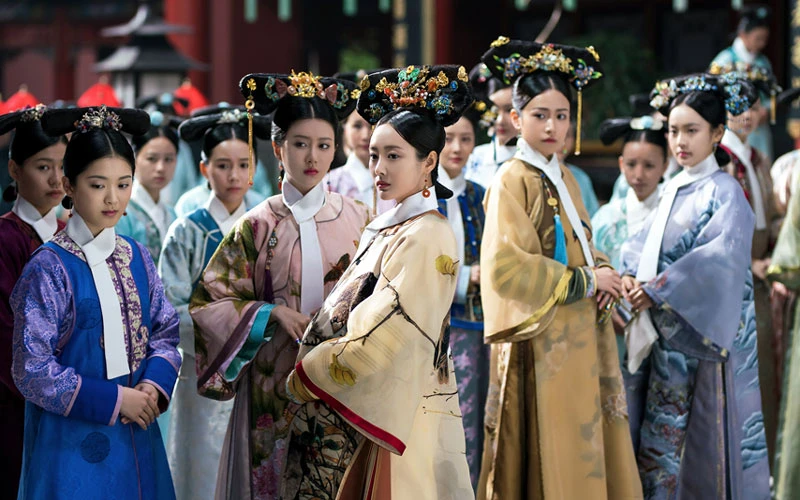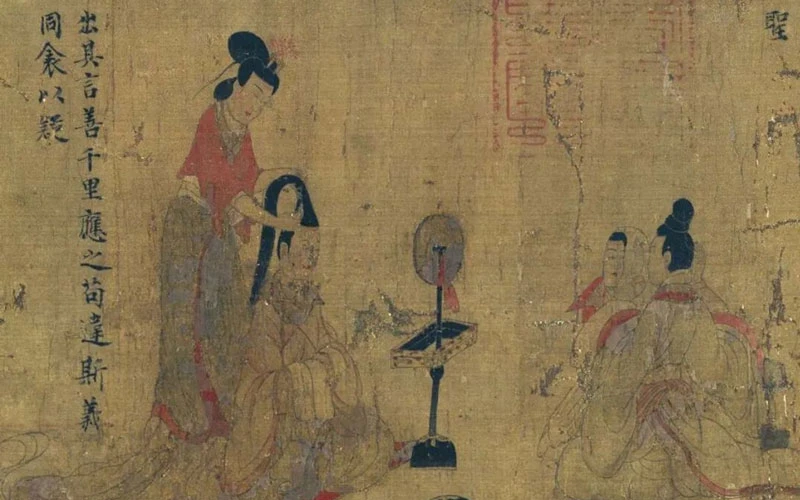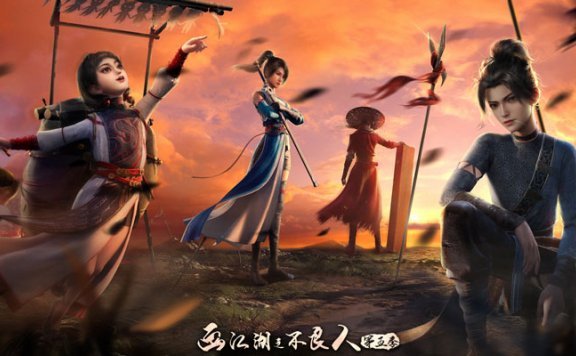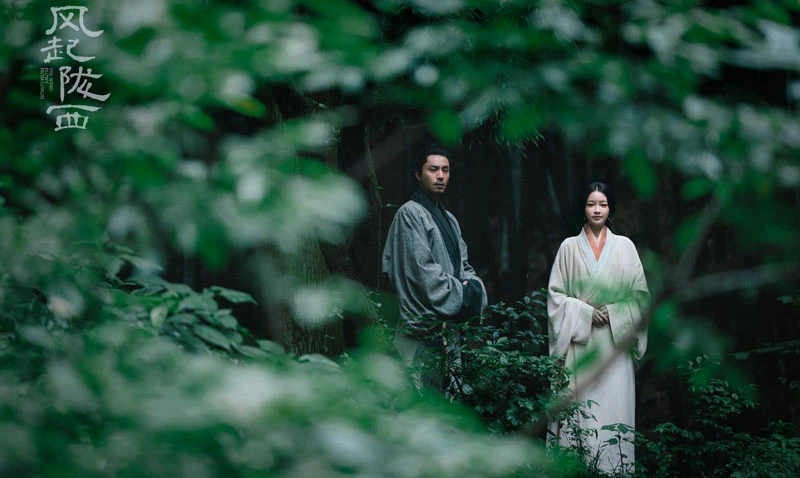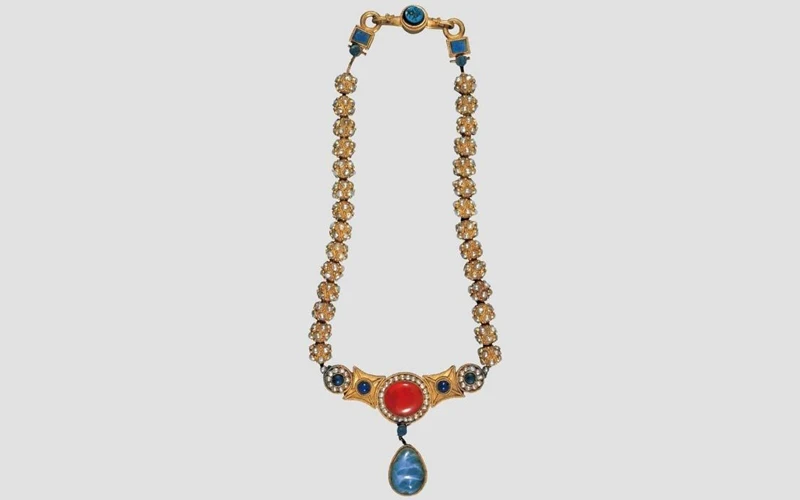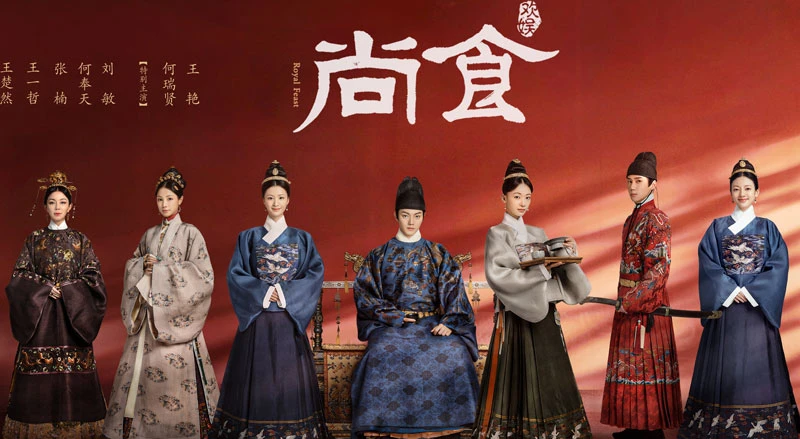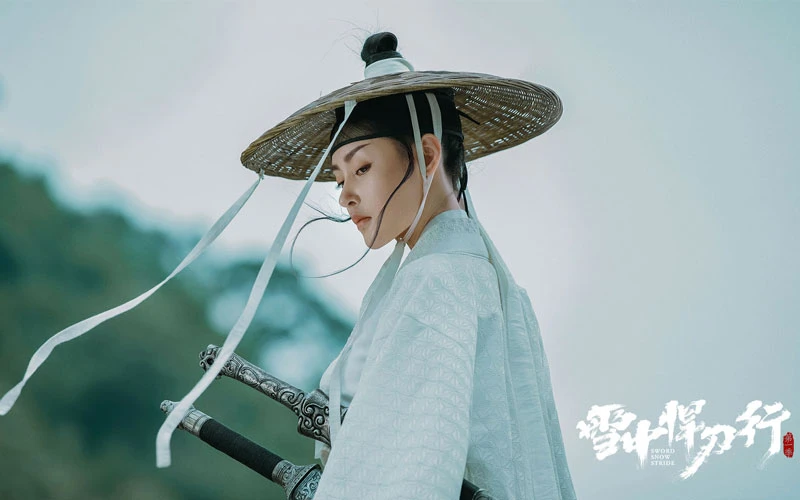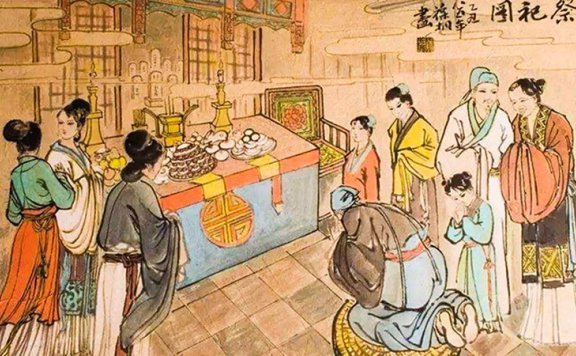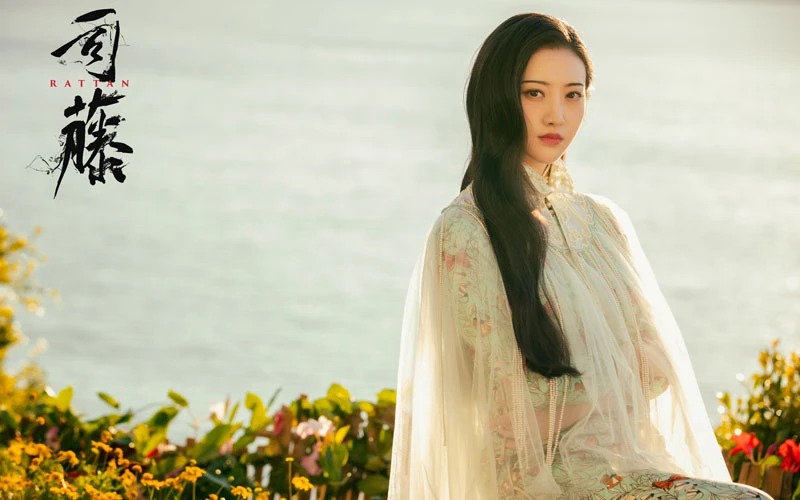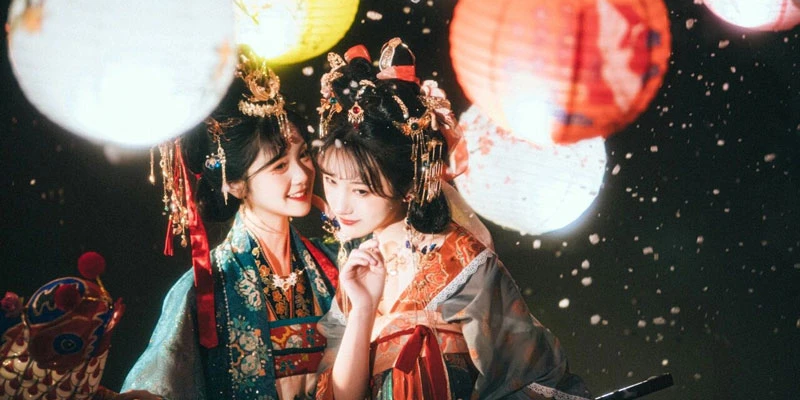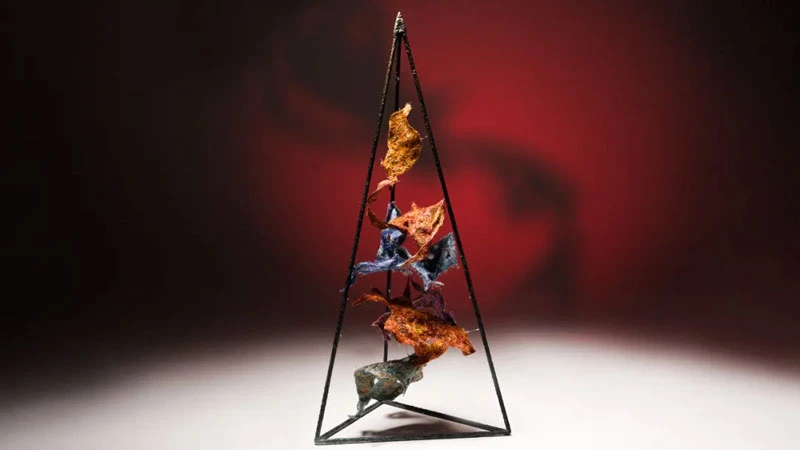Article
Search results for the keyword [hanfu making]:
-
The Path of Traditional Velvet Flower Skills Inheritance
According to legend, in the Tang Dynasty, during spring, Emperor Li Xian would order his servants to take out "colored flowers" from the inner palace and give them to the concubines of the harem to welcome the new spring, and these "colored flowers" referred to the Rong Hua (绒花, velvet flower). Today, Rong Hua is often worn with traditional hanfu and has become one of the most popular accessories in Chinese traditional costumes. The flower hairpin was always one of the most popular decorative styles of the ancients. In the painting "Court Ladies Adorning Their Hair With Flowers" by the famous Tang Dynasty painter Zhou Fang, the woman is wearing a high bun and wearing a flower as a hairpin, which is as elegant and beautiful as a fairy in a fantasy world. But flowers are limited by the season and easily withered, and the petals often wither. So the ancient noble ladies wished to have flowers that would last forever as accessories, and that's when the handmade Rong Hua came into being. The Chinese word for velvet flower is similar to the pronunciation of "Rong Hua (荣华, prosperity)" and has been given a meaning of good luck and blessing. The… -
7 Fantasy Clothing Motifs in Chinese History
Have you ever noticed the motifs on a hanfu? They are diverse and can even be considered the finishing touch to a hanfu. Maybe it is some kind of animal from ancient times or different kinds of plants to match. Most of them have a special meaning, and some fantastical motifs even contain mythological stories. Animal Motifs Qilin Motifs Although the production environment of the ancients was much less than the modern society, the ancients never skimped on their imagination when it came to creating sacred animals. For example, the Qilin (麒麟). With a dragon head, deer antlers, cow hooves, and lion's tail, the Qilin changed several times before the Tang Dynasty and had no fixed appearance. In the Song Dynasty, the body became a common lion-shaped scaly body, basically into the current form. In "Fantastic Beasts 3: The Mystery of Dumbledore", the Qilin appears as a new fantastic beast. This is the second Chinese mythical creature launched in the "Fantastic Beasts" series, Zouwu from the "Shan Hai Jing" appeared in "Fantastic Beasts 2: The Crimes of Grindelwald". Qilin is a symbol of auspiciousness and has a very high status in ancient times, and has been assigned with simple… -
Fashion Trends of Antique Chinese Clothing Through the Dynasties
Unlike modern clothing, which is updated so frequently, the development of antique Chinese clothing was not only accompanied by the change of dynasties, but also combined with the level of fabrics of the time. However, there is no doubt that different periods in ancient China had distinctive fashion items. 01 Shenyi in Han Dynasty In 1972, when the three-month archaeological excavation ended, the archaeologists of Tomb No. 1 of the Mawangdui Han Tomb in Changsha were still excited. During the subsequent work, they discovered a dozen pieces of well-preserved Western Han costumes, thus opening a window for later generations to peek into the aesthetics of the dress worn by ancient Chinese 2000 years ago. The relics of the tomb that the archaeologists cleaned were from the tomb of Xin Zhui, the wife of Li Cang, the prime minister of Changsha in the early Western Han Dynasty. Based on archaeological and textual records, we know that there were two main types of clothing for the ancient Chinese during the Qin and Han dynasties. Type Yichang (衣裳), in which the clothing of the upper body and the lower body were not connected; Type Shenyi (深衣) in which the upper garment and… -
The Profound Chinese Tea Painting Art Culture in Cdrama A Dream of Splendor
China has a long history of tea drinking, which emerged in the Tang Dynasty and became prosperous in the Song Dynasty. It is in this context that the story of A Dream of Splendor takes place. In the drama, Liu Yifei as Zhao Pan'er, together with two girlfriends, opened a tea store in Bian Jing, the capital of the Song Dynasty. With Zhao Pan'er's excellent marketing skills, Sun San Niang's delicious pastries, Song Yin Zhang's wonderful Pipa performance, and most importantly, Pan'er's extensive experience in Dian Cha, as well as Cha Bai Xi, their tea store has achieved initial success. Dian Cha (点茶, whisking tea), as an important part of Chinese tea culture, is the main tea drinking method in the Song Dynasty, and also an important way of leisure and entertainment for the literati and ordinary people. Cha Bai Xi (茶百戏, tea painting art), also known as: Fen Cha (分茶), Shui Dan Qin (水丹青). Firstly, the finely ground tea powder is injected into the tea bowl with boiling water, while stirring with a tea whisk, the tea froth floats up and forms a suspension. Then use the teaspoon and water to draw words and patterns on the surface. Cha Bai… -
History of Traditional Chinese Fan
When was the traditional Chinese fan born and what did it first look like? These are no longer available in kind. According to the speculation of Mr. Shen Congwen, the traditional Chinese fan was used at least not later than after the appearance of pottery in the Neolithic period. Pre Qin Dynasty In ancient times, human beings picked a leaf of a plant or a feather of a bird in the hot summer, and simply processed it to fan the wind and take shade from the sun, which is the prototype of the original fan. In the initial era, the fan was called "箑(shà)" or "萐(shà)", and also "翣(shà)”", and only in the later development was it unified and called "扇(shàn)". The above-mentioned different fan of the ancient name, but also reflects the material of the fan at that time are bulrush, feathers, bamboo, and so on. The oldest fan excavation artifact at present is a short-handled bamboo fan, also known as Bian Mian (便面), unearthed from an ancient tomb of the Eastern Zhou Dynasty in Jing'an County, Jiangxi. As the earliest image of a fan, it appears on a bronze pot unearthed in Chengdu, which belongs to the… -
The Origin and Meaning of the Tiger Hat - Chinese Traditional Children’s Clothing
The tiger hat (虎头帽, tiger head hat) is a typical child's hat style in Chinese folk costumes with the image of a tiger. Tiger hats, tiger shoes, tiger bibs, tiger dudou, etc. as an important part of Chinese children's clothing, with distinctive characteristics. The tiger is considered a kind of auspicious beast in Chinese traditional culture, and is an important object of totem worship for the Chinese nation. The tiger hat as a folk handed down to this day a kind of children's hat ornament, with the tiger as the image, hat shape, the pattern is also more tiger head model, so-called the tiger hat. Origin and Development Origin 1: Ancient China was a traditional agrarian society that experienced a lot of hardships in claiming nature's materials, and various symbols and forms of divine power to help ward off disasters emerged. The tiger, as a positive symbolism, was recognized as a sheltering god that could block disasters, and the tiger totem has been passed down to this day in the worship of many evil suppresses. People gradually infiltrated this worship as a belief into the people's daily life, and developed unique handicraft clothing such as tiger hats. Origin 2: Chinese tiger… -
Chinese Colours in the Traditional Costumes of Various Dynasties
Chinese clothing is the epitome of Chinese civilization. Traditional clothing colors are influenced by the "Theory of the Five Elements" and are divided into five colors: green, red, black, white, and yellow. The different colors revered by different dynasties reflect the characteristics of their dynasties. In this article, the most representative six dynasties of ancient China are selected: Han, Tang, Song, Yuan, Ming, and Qing, and their popular colors are analyzed. Chinese Colours in Han Dynasty Characteristics: Simple and natural Popular colors: Xuan (玄, smoky black), Chi (赤, upsdell red), White (白), Green (绿) In 206 B.C., the Han Dynasty was founded. Influenced by the Taoist art of Huanglao and Confucianism, Han Dynasty costumes pursued the essential beauty. The color of Han Dynasty clothing was mainly monochromatic, and it was a respect for the dark and light colors, which made it look dignified, simple and natural. Carried the idea of "ritual rule and Taoism", and fabric dyeing of Han Dynasty clothing followed the beliefs of the five elements of yin and yang, with dark colors representing dignity. Color Xuan in Han Dynasty clothing After the Han Dynasty destroyed the Qin Dynasty, water virtue was revered according to the doctrine… -
The Wind Blows From Longxi Review - Most Worth Watching Spy Drama in 2022
The exciting spy war plot, combined with the Three Kingdoms period, what kind of exciting plot will be presented? "The Wind Blows From Longxi" takes intelligence warfare as the basic, and launches a unique game of chance. The drama tells the story of Chen Gong (陈恭, Chen Kun) and Xun Xu (荀诩, Bai Yu), two minor characters. In that era when the country was divided into three and war was raging, they played an important role in the thrilling spy war and wrote a heroic legend outside the history books. A new image of the spy drama With tension, excitement, and life hanging in the balance, "The Wind Blows From Longxi" maintains a tight plot from the first episode. In Zhuge Liang's first Northern Expedition, Jieting is lost. Si Wen Cao (司闻曹), the agency responsible for military intelligence in Shu state (蜀汉), discovered that during the battle, the Shu spy "Bai Di (白帝=Chen Gong)", who was lurking in the Wei state (曹魏), sent a secret report of the Wei army's battle plan, but it was a false intelligence, which misled the Shu army's decision and directly led to the defeat of the Northern Expedition. Subsequently, the You Xiao (游枭)… -
Top 9 Classic Chinese Palace Dramas That Worth Watching
Chinese Palace drama (宫斗剧, Gongdou, harem drama, or palace scheming dramas) refers to a drama set in ancient China's feudal dynasties. Female characters, such as concubines or female officials, are the main subjects of the story. The main plotline is the emotional entanglement of the characters or political power struggle. Palace dramas focus on entertainment and dramatization, and are somewhat different from historical dramas. The first hit palace drama was "War and Beauty" in 2004, then "Schemes of a Beauty" in 2010, and "Empresses in the Palace" in 2011 generated outstanding ratings and brought widespread attention to palace dramas. Almost all of the stories in the palace dramas occur in the isolated harem, where the "scheming" is the core plot and narrative focus. A group of originally delicate aristocratic women, fighting on this battlefield of deceit, with only one goal in mind: the emperor's favor. All the characters in the harem drama have no distinction between right and wrong, good and evil, but only the success or failure of their tactics and schemes, and the consequent differences in their fates. Therefore, the women in the situation have a strong sense of crisis and high sensitivity to their difficult situation. All… -
Top 10 Chinese Historical Political Dramas Receiving Highly Acclaim
Historical political dramas, focus on power and strategy. In Chinese historical political dramas, the protagonists are usually in changing dynasties, with tense plots and complex character conflicts that portray the dark rivalry between different forces and keep the audience engrossed in the drama. If you ask what is the attraction of historical political dramas? Probably it can meet the aesthetic experience and expectations of the audience in many ways. The overall story is set in ancient times, and most of the settings are related to the imperial court, which satisfies the public's desire to pry into the royal family. The storyline, full of logical reasoning and details, also makes the audience constantly look forward to the direction of the plot. There are three kinds of themes in Chinese historical dramas that show the means of power and strategies. The first is imperial dramas, in which the plot focuses on the struggle for power among emperors, ministers, and heirs, mainly highlighting the politics of strategists, such as "Kang Xi Dynasty" and "Ming Dynasty in 1566", etc, basically takes history as the main vein and is rated by netizens as the peak of the power and strategies drama. The second kind is… -
History of Wigs in Ancient China
When you browse through the tutorials of hanfu hairstyles, you will find that the use of wigs is widespread. Is it true that girls had long and dense hair in ancient China? The eternal problem of thinning hair is not only a problem for modern people, but ancient beauties also needed to rely on wigs to complete the look. The application of wigs has a history of thousands of years. Today we briefly introduce the history of wigs. Di (髢, dí) and Bi (髲, bì) were the original names for traditional Chinese wigs. However, not everyone had access to wigs in ancient China. At the beginning of the wig's birth, it was not an ordinary accessory. The Rites of Zhou records that Zhuishi (追师), a kind of palace official in charge of the empress' headdress, made wigs and headdresses. 追师掌王后之首服,为副编次追衡笄…… ——《周礼》 Fu (副), Bian (编), Ci (次) are three different levels of wig types, only worn during critical events such as rituals, and only for the exclusive use of noblewomen such as empress and madam. The famous Mawangdui Han tomb has unearthed a well-preserved "Fu" wig. This set of wigs is thick and black, and Lady Xin Zhui chases… -
2022 Upcoming Chinese Xuanhuan & Wuxia Anime List
In recent years, exciting Chinese anime productions have emerged, making great leaps in content and quality and gaining more and more recognition and love from anime fans. For example, the Wuxia anime The Legend of Qin, which is about to receive its seventh season, and the Xuanhuan anime Douluo Continent, updated to more than 200 episodes. The combination of Wuxia, Xuanhuan, and anime can be said to be perfect, with fantastic dueling images and heart-wrenching plots. Once you open the first episode, you will be immersed in it, and keep looking forward to the start of the new season. This article will list the Martial Arts and Fantasy Chinese Animation that will be released or updated in 2022. Bookmark this list, and we'll keep updating it here with exciting Chinese anime! The Degenerate-Drawing Jianghu Season 5 · 画江湖之不良人5 Also known as: Hua Jianghu: Bu Liang Ren V Period Background: Tang Dynasty Genres: Wuxia Anime, Action, Historical Aired: January 20, 2022 Episodes/Duration: 12/25min "Buliang Ren" is an officer who was engaged in detecting and catching theft in Tang Dynasty. The story of this animation is about the hidden treasure of Longquan by "Buliang Ren". In The Degenerate-Drawing Jianghu, the heroes… -
10 Historical Series That Are Worth Watching in 2022
10 exciting historical series will be broadcast in 2022, tradition history, biography, suspense, what surprises will they bring for us? -
History of Chinese Traditional Necklace & Choker
The ancient women left their stunning figures in the ancient poets, and their bejeweled were equally eye-catching. That brilliant hanfu jewelry like a river of stars, will set them off quiet, elegant, highlighting the unique charm. In this article, let's go into the history of gorgeous Chinese traditional necklace and choker and see how the ancient people carried forward the beauty of neckwear. The Ancient Times When our ancestors were still living in cold, dark caves, the sense of beauty was already awakened. They searched for anything that resembled "beads", drilled holes in them, strung them on chains, and wore them around their necks. Some of them were also painted red with hematite powder. At the Zhoukoudian Peking Man site, which is about 30,000 years old, a large number of neck ornaments have been unearthed. These neck ornaments are made of different materials, including gravel, animal teeth, fish spine bones, and bird bones, all of which have been carefully selected and polished. Among them, there is a string of rabbit bone chains, consisting of 12 pieces of rabbit backbone, each of which has a hole for threading. The holes have been worn out and deformed due to long-term wear,… -
Royal Feast - Latest Cuisine & Palace Cdramas that Worth Watching
A new cdrama, Royal Feast, recently aired! This culinary and palace drama set in the Ming Dynasty stars the original cast of the hit drama Story of Yanxi Palace. As the name implies, Royal Feast (尚食, Shang Shi) is a historical drama that focuses on the palace cuisine of the Ming Dynasty. The story takes place during the Yongle period of the Ming Dynasty, where the young cook Yao Zijin, played by Wu Jinyan, enters the palace and shows her "culinary talent" step by step, and eventually becomes a female official of the Food Bureau of the Imperial Palace. Royal Feast not only presents many court food, but also the sweet palace love between Yao Zijin and Zhu Zhanji, the imperial grandson. In this article, we will share the highlights of Royal Feast from food, costumes, and props. Palace cuisine in Royal Feast The cuisine is the most important part of the drama! For the important Food Bureau of the Imperial Palace scene design, the team carefully drew a detailed structural model drawing, and made a detailed restoration of each place. In order to restore the menu of the Forbidden City in the Ming Dynasty, the non-heritage team… -
40+ Wuxia & Xianxia Cdramas in 2022, Which Will Become a Hit?
In the year 2021 that has just passed, a topic that is often brought up is just how many Wuxia and Xianxia cdramas will be aired next year. It is not difficult to understand such a question. According to statistics from public sources, including various projects to be broadcast, wrapped, started filming, and in preparation, there are at least 40+ Wuxia and Xianxia cdramas exposed so far, which can be considered the most crowded track in the film and television industry in 2022. On January 14, the new-style martial arts drama "Sword Snow Stride " ushered in the first season finale. on January 16, "Mirror: Twin Cities" will first kick off the prologue of this year's fantasy cdrama. Xianxia Cdramas: Adaptation Determines the Winner The most obvious phenomenon of Xianxia cdramas is that although the quantity is large, the hits are not easy to come by. On the one hand, although Xianxia cdramas have a fixed audience, there is a quota for scheduling, and only the real top dramas have the chance to be syndicated on multiple platforms. On the other hand, historical drama is a big part of cdrama, long creation period and large cost investment are its… -
Origins of the Qingming Festival
The Qingming Festival is coming up soon! Learn more about where this holiday came from and some things that you can do to participate in celebrating it, both in the way of the ancients and the way that people do now. -
Cdrama Rattan: Hightlight and Cheongsam Look Analysis
If you are a cheongsam enthusiast, then you must watch the Chinese drama Rattan (司藤). With its novel and compact plot, perfect cast, refreshing cheongsam looks, and documentary-style live-action interpretation, it is a drama worth watching. The story of a young designer, Qin Fang (Zhang Binbin), who meets Si Teng (Jing Tian), who has been asleep for decades, in the process of helping Si Teng to find the truth of her birth, the two get to know each other and overcome many obstacles to grow together. As a classical oriental fantasy drama, the success of Rattan undoubtedly let us see the deep charm of Chinese mythology latent. Perfect Character selection and setting Wei Yu, the author of the Rattan original, specializes in fantasy themes with rich imagination and strong writing power. The female characters in her works mostly exude mature and independent femininity. In the original novel, "Miss Si Teng" is the extreme image of a female protagonist who has been assassinated and fallen asleep for decades, and wakes up confused about the modern society she lives in, and plays a series of heartwarming and hilarious scenes. When adapting the original work, which has a large fan base, the… -
A Perfect Show for Chinese Lantern Festival in 2022
Lantern Festival is one of the traditional Chinese festivals. The first month of the lunar calendar is called Yuan Yue (元月), and the ancient people called "night" as "Xiao (宵)". The 15th day of the first month is the first full moon night of the year, so the 15th day of the first month is called "Yuan Xiao (元宵节, Lantern Festival)". The Lantern Festival has been celebrated since ancient times with the festive custom of viewing lanterns. But the Lantern Festival has a long history of formation and has its roots in the ancient folk custom of lighting lanterns to pray for good fortune. According to general information and folklore legends, the 15th day of the first month was already valued in the Western Han Dynasty, although the Lantern Festival really became a national folk festival after the Han and Wei dynasties. The rise of the custom of lighting lanterns on the Lantern Festival is also related to the eastern spread of Buddhism, the Tang Dynasty, Buddhism flourished, officials and people generally in Yuan Xiao, "lighting lamps for Buddha", Buddhist lights then spread throughout the folk. The festival features a series of traditional folk activities such as viewing lanterns, eating… -
Incorporate Chinoiserie Into Your Gift Ideas in 2022
Chinese Intangible cultural heritage is no longer just stay in the museum for the public today. As of November 2021, the number of Chinese intangible cultural heritage projects is 1,557. In addition to the old traditional folk crafts to be guarded by the old generation, the most important thing is to combine innovative elements with the deep-rooted intangible cultural heritage. Tencent Video has crossed over with Chinese traditional craftsmen from different fields to create new peripheral works using traditional cultural elements and skills for a number of popular cdramas, documentaries and variety show IPs. This is not only the heritage of traditional Chinese culture, but also new ideas for Chinoiserie gifts. Let's see what wonderful artworks they bring together. NO.1 Rong Hua: Tradition, Ultimate Romance Rong Hua (绒花) was first introduced as a tribute to the royal family in the Tang Dynasty, and was also known as "Palace Flower", which means good luck and blessing. Most of them use a combination of harmonics and artistic images to express. After "Story of Yanxi Palace" became a big hit, the female character of the costume drama "Court Lady", which was broadcasted this year, wore snowflakes on her head, which again brought…
